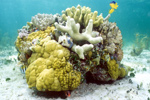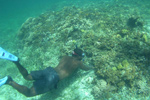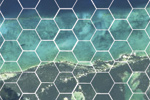
In many tropical marine areas such as the Caribbean, one finds productive ecosystems harboring a large diversity of organisms. People also live in these places, and harvest marine organisms for their livelihoods. The complex question arises: How to balance marine biodiversity conservation and local fishery activities? Marine protected areas, including marine reserves that completely ban fishing and other extractive activities, are a promising approach for addressing both of these factors.
This simulation-based exercise is an educational tool that allows users to:
1) Explore various factors that influence fish population viability and fishery sustainability; and
2) Experiment with the use of marine reserves as tools in fisheries management.
Highlights
- Interactive experimentation by users with marine reserve configurations and species and fishing parameters;
- Visualization of habitat suitability for three Caribbean fisheries species;
- Visualization of species abundances and fishing profits over time;
- Visualization of average harvest catch, effort, profits, and the source of these profits across space; and
- Saving of all input parameters and simulation results.
If you are an instructor, please click here. If you are a student, please click here.
The interactive computer simulation was produced by the Center for Biodiversity and Conservation at the American Museum of Natural History, with generous support from the National Oceanic and Atmospheric Administration (NOAA) and a National Science Foundation (NSF) Biocomplexity in the Environment Grant. To see our Acknowledgements, please click here.






